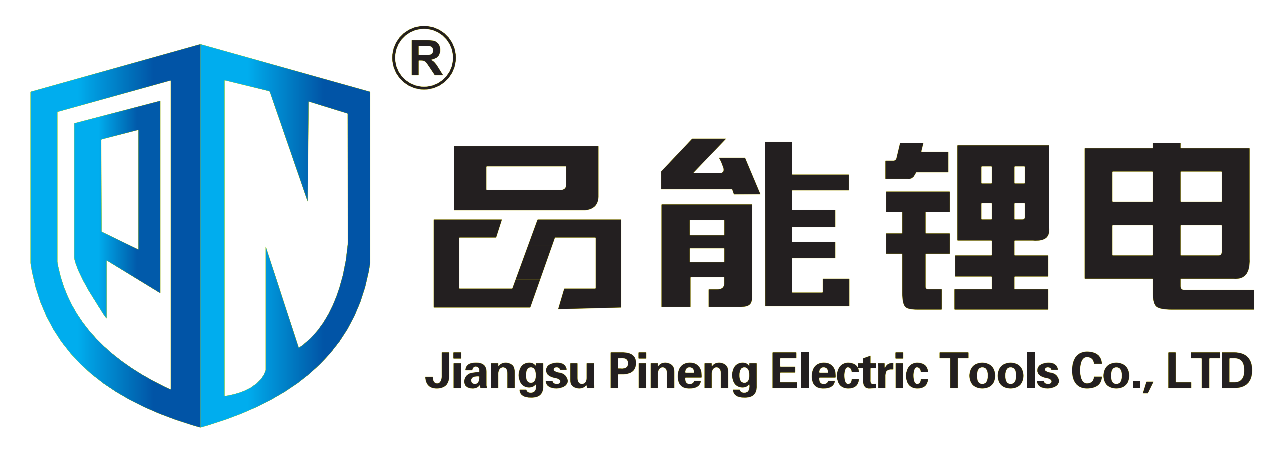Battery Technology and Power
Lithium-Ion vs. Nickel-Cadmium (NiCd)
When comparing battery tech, lithium-ion definitely beats nickel-cadmium (NiCd) in quite a few important ways. For starters, lithium-ion packs way more power into smaller, lighter packages. This makes devices easier to carry around and handle during use. Another big plus is that unlike those old NiCd batteries, lithium-ion doesn't have memory effect problems. So users can recharge them whenever needed without worrying about reduced capacity over time. Looking at industry numbers shows just how much longer lithium-ion lasts too. These batteries typically go through about 2,000 charge cycles before needing replacement, while NiCd usually tops out around 1,000 cycles. With all these advantages becoming clearer, we're seeing a clear shift toward lithium-ion across various markets. Cordless power tools especially benefit from this tech. Professional electricians and construction workers now rely on wireless drills powered by lithium-ion because they simply work better for extended periods without letting users down when it matters most.
Voltage Ratings: 18V vs. 20V Systems
Looking at 18V versus 20V systems shows some pretty clear differences when it comes to how they perform and what they're good for. Take Bosch cordless drills for instance most of them go with 18V because it strikes a nice balance between power and size, making them great for all sorts of work from delicate drilling projects to everyday screw driving tasks around the house or workshop. On the other hand, Dewalt has made their name with 20V battery drills designed specifically for heavy duty jobs where extra torque matters and runtime needs to last through long workdays without constant recharging breaks. The numbers back this up too 20V systems generally pack more punch and stay powered longer, which means better performance overall even if regular weekend warriors might not notice much difference day to day. Companies know this well enough to market 20V tools as being stronger simply because people tend to think higher voltage equals better power, regardless of actual specifications.
Battery Life and Charging Efficiency
How long batteries last and how fast they recharge really matters when it comes to using cordless tools day in and day out. Take a good quality drill with a decent lithium ion battery pack for example. These tend to run longer before needing a recharge and get back up to speed much faster too. Most lithium ion packs will top off in around an hour whereas older nickel cadmium batteries used to take over two hours sometimes. The tech behind fast charging has come a long way lately, so workers don't spend as much time waiting around for their tools to be ready again. For professionals who need to switch between different jobs throughout the day without losing momentum, this makes all the difference. Wrench screwdrivers especially appreciate this kind of quick turnaround since they're often part of bigger projects requiring multiple steps and adjustments across various surfaces and materials.
Motor Type: Brushed vs. Brushless
Brushed Motor Durability and Cost
People tend to like brushed motors because they're generally affordable and pretty tough, so they work well for simple drilling jobs and when professionals just need something basic. The price tag is lower since the design isn't too complicated, with those little carbon brushes and a commutator doing the job of conducting electricity. Industry folks will tell anyone who asks that this straightforward setup cuts down on what it costs upfront and makes production easier overall. But there's a catch. Those brushes wear out over time and need replacing regularly, which adds up in maintenance costs eventually. We've seen plenty of field reports showing brushed motors breaking down more frequently under heavy duty conditions compared to brushless models. Still, if money matters more than how long something lasts, brushed motors remain a good go-to option for many shops and DIY enthusiasts working within tight budgets.
Brushless Motor Efficiency and Longevity
Brushless motors have become really popular lately because they save energy and last much longer than old style motors. The main thing is these motors don't need brushes at all, which means there's less parts wearing out over time. This makes them last longer and work better overall. Some research shows brushless motors actually use less electricity compared to regular brushed motors, so batteries tend to last longer between charges. That matters a lot when someone needs their tools running nonstop during big projects. Take construction equipment or industrial machinery for instance, brushless versions can handle tough jobs day after day without breaking down as often as traditional models do. Mechanics and technicians report seeing more companies switch to brushless tech across various sectors. Most people who work with these motors appreciate how rarely they need servicing plus the fact that they just perform better in demanding situations where downtime costs money.
Professional Wireless Drill Performance
What kind of motor a professional wireless drill has makes all the difference in how it performs during actual jobs on construction sites or in woodshops. Most experienced tradespeople compare brushed and brushless options depending on what they need the tool for day to day. Many carpenters report that brushed motors get the job done fine for basic drilling tasks around the shop, but tend to struggle when faced with tougher materials like hardwood or thick steel plates. Brushless models generally deliver much better power and faster operation speeds, something that matters a lot when working under tight deadlines. When picking out a cordless drill, pros typically look at three main factors: how much power the motor delivers, how long the battery lasts between charges, and whether the motor runs efficiently without overheating. These considerations matter because nobody wants their drill cutting out mid-job during critical moments. That's why so many serious craftsmen have switched to brushless technology despite the higher price tag.
Torque and Speed Capabilities
Adjustable Torque Settings for Precision
Getting the right amount of torque matters a lot when drilling, especially since some jobs need gentle touch while others call for brute force. Most modern cordless drills come with adjustable torque settings so people can pick what works best for their project. This helps prevent stripping screws or cracking whatever they're working on. People who actually use these tools tend to look for models with plenty of options between low and high torque settings. Take Bosch for instance many of their popular models offer around 24 different settings, something craftsmen appreciate because it covers almost every situation they might encounter. Tool makers know this stuff well enough to build those adjustments into their designs, helping folks get things done right without breaking anything important along the way.
Variable Speed Triggers and RPM Ranges
The ability to change speed makes a big difference when dealing with all sorts of materials and jobs around the workshop. Most cordless drills these days can go anywhere between about 500 and sometimes over 2000 RPMs, letting folks tweak their speed depending on what they're working with. Slower settings work better for metal stuff while wood generally needs higher speeds. People who know their tools say getting the right RPM for the job at hand does two things it makes everything run smoother and helps keep the drill from burning out too fast. A lot of tradespeople actually prefer models with wide speed ranges because they just handle so many different situations without needing multiple specialized tools lying around.
High-Torque Applications (e.g., DeWalt 20V Battery Drill)
When working on construction sites or in heavy industrial settings, nobody wants to mess around with weak tools. That's why high torque drills become absolutely essential for getting through those really tough materials. Take the DeWalt 20V battery drill for instance. Contractors love how it handles those big jobs without breaking a sweat. The specs show these bad boys can tackle oversized screws and punch holes right through thick wood or steel panels without any issues. Real world experience backs this up too. Most professionals who've used them swear by their performance in tough situations. They talk about how reliable these drills are day after day, week after week, even when pushed hard in challenging conditions. For anyone serious about their work, having a drill that delivers consistent power makes all the difference between finishing a job on time and watching it drag on forever.
Chuck Design and Bit Compatibility
Keyless Chuck Convenience
The convenience factor of keyless chucks makes them a game changer for anyone working with drills regularly. Traditional models always needed that extra wrench lying around somewhere just to swap out bits, while keyless versions let people change tools in seconds flat. For shops where every minute counts, this means less waiting around between jobs and getting more done overall. Some studies suggest these chuck designs can cut down on wasted time by about a quarter during critical projects, though numbers vary depending on what exactly needs drilling. Most folks who have switched to keyless report they never want to go back, especially weekend warriors fixing things around the house and contractors dealing with multiple jobs throughout the day. The simplicity of operation really stands out when compared to fumbling with keys and losing track of where they got placed last.
Chuck Size (1â4â to 1â2â) for Versatility
Drill chucks come in sizes ranging from 1/4" all the way up to 1/2", and this variety makes a big difference when tackling different jobs around the shop or worksite. Smaller chucks work best for delicate tasks where fine control matters, while bigger ones are what professionals reach for when dealing with tougher materials and heavier duty drilling. Most pros stick with the 3/8" size because it fits so many standard bits without needing constant adjustments. Bigger chucks tend to be favorites among serious users since they can take on almost anything thrown at them. People who spend time working with tools really value this flexibility, as it means fewer trips back to the toolbox looking for the right fit.
Hex vs. Round Shank Compatibility
When deciding between hex and round shank bits, several things come into play including how well they hold, how much power they can transmit, and what kind of drill chuck works best. Hexagonal shanks give better grip and transmit more torque, which makes them stand out when working on tough jobs where bits tend to slip around. Round shanks have their place too since they work with almost any standard chuck, even if they don't grab quite as tightly. Most people find that hex bits handle rough drilling without issues while round ones perform better for detailed work where control matters most. Looking at what's happening in workshops these days, plenty of tradespeople are switching over to hex designs because they just feel more solid and dependable when pushing through tough materials.


